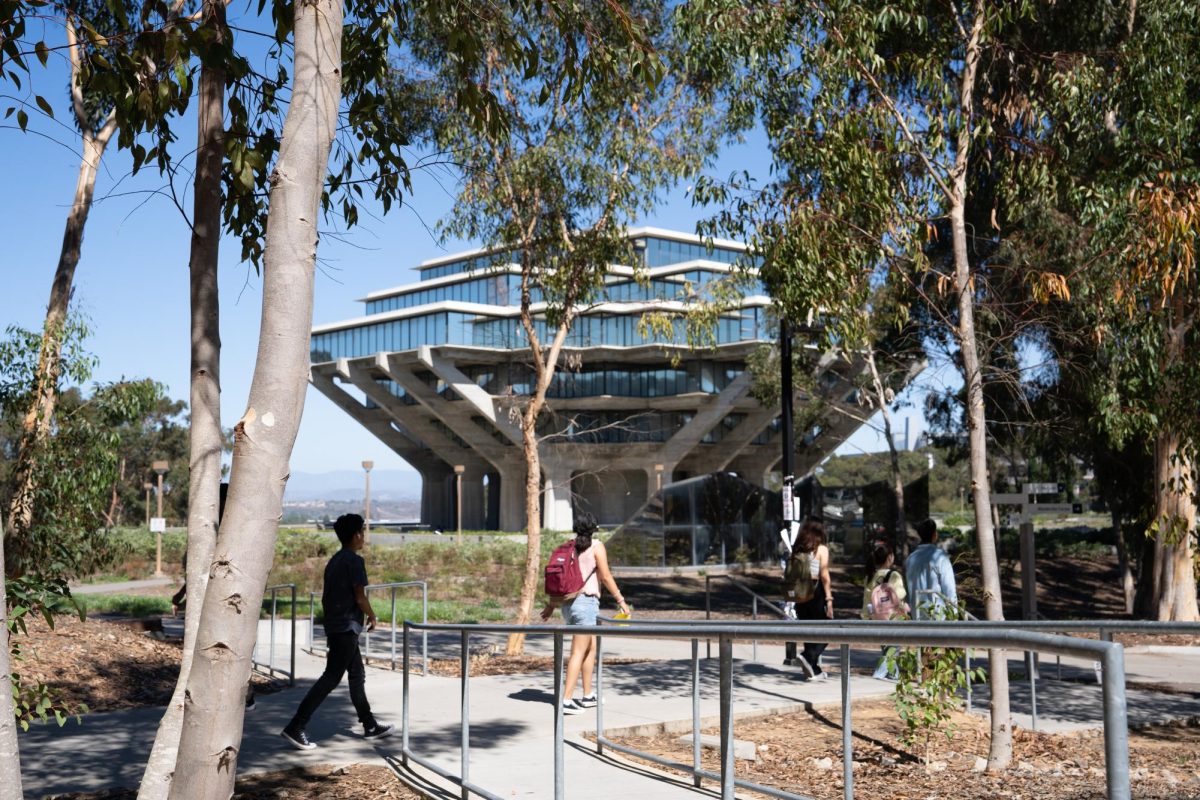Dean of the Division of Physical Sciences and professor of chemistry and biochemistry Mark Thiemens, graduate student Morgan Nunn and Dr. Robina Shaheen worked with a team of scientists from the University of New Mexico and the Carnegie Institution of Washington to study the rocks. The samples were obtained from University of New Mexico meteorite curator Carl Agee.
The rock is one of 110 known meteorites from Mars and is from the recent geologic epoch on Mars called the Amazonian that occurred approximately 2.1 billion years ago.
“This is the oldest meteorite from Mars ever,” Thiemens said.
The particular rock sample was found to have nearly ten times the amount of water as other Martian rocks. Scientists said its composition of cemented fragments of basalt mixed with feldspar and pyroxene suggests it came from the Martian crust. Its unique composition also gives insight into the ancient surface and environmental conditions on Mars.
The scientists used isotope-ratio mass spectrometry and UCSD-developed technology to determine the composition of the sample. Isotopes are atoms with a different number of neutrons.
Thiemens and his lab heated the meteorite sample to release water, which is collected in a vacuum system and then analyzed it using a mass spectrometer for isotopes.
The carbonates and sulfates released in water were then reacted with acids, which were also analyzed using a mass spectrometer for isotopes.
Comparing the isotopes of oxygen, water, carbon dioxide and sulfates in the sample to known isotopes from other rocks from Mars and samples remotely collected by Mars rovers revealed characteristics unique to this particular rock.
“The interesting part is that the minerals have shown that [the rock] is unlike any other Martian sample ever measured,” Thiemens said. “Many of the theories about the history of Mars and its origin are [being] called into question now.”
Some theories being questioned are the origin of Martian water and how the planet has changed over the past two billion years.
The discovery has raised discussion and interest in the scientific community on the isotope measurements, as this is the first time these certain characteristics were present in a meteorite sample from Mars.
Thiemens said the next step is to measure and compare another more recent meteorite sample.
Last April 22, a 100,000-pound asteroid broke apart as it entered the atmosphere and flew over the Sierra Nevada mountain range. Scientists recovered 77 pieces near Sutter’s Mill, the site of the 1849 California Gold Rush. He described the sample to be analyzed as a “CM-type carbonaceous chondrite,” a rare pristine meteorite known to contain a rich mix of complex organic compounds like amino acids.
“The evolution of these species traces the origin of Mars’ atmosphere, [which] is a critical part of understanding the [possibility] of life on Mars,” Thiemens said.







